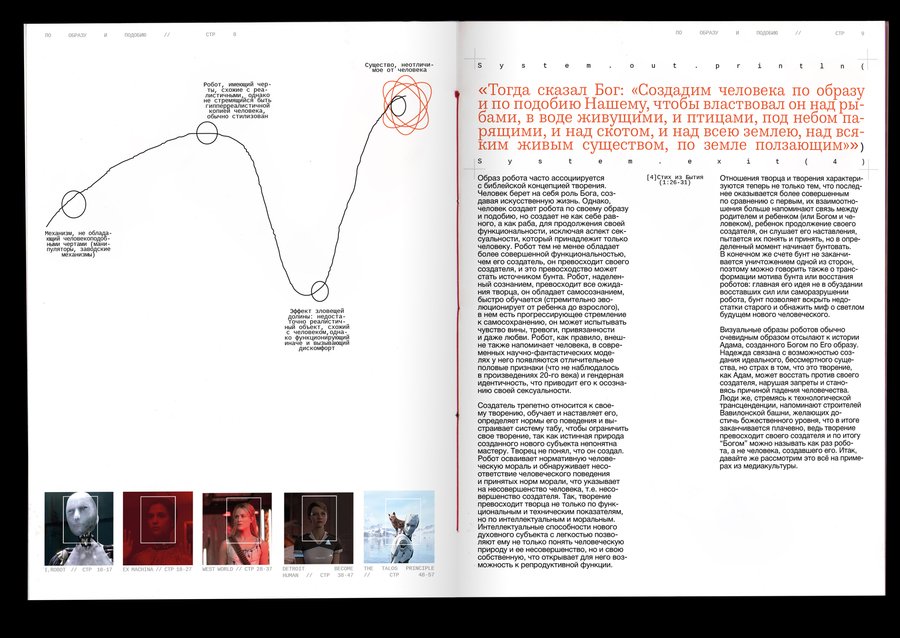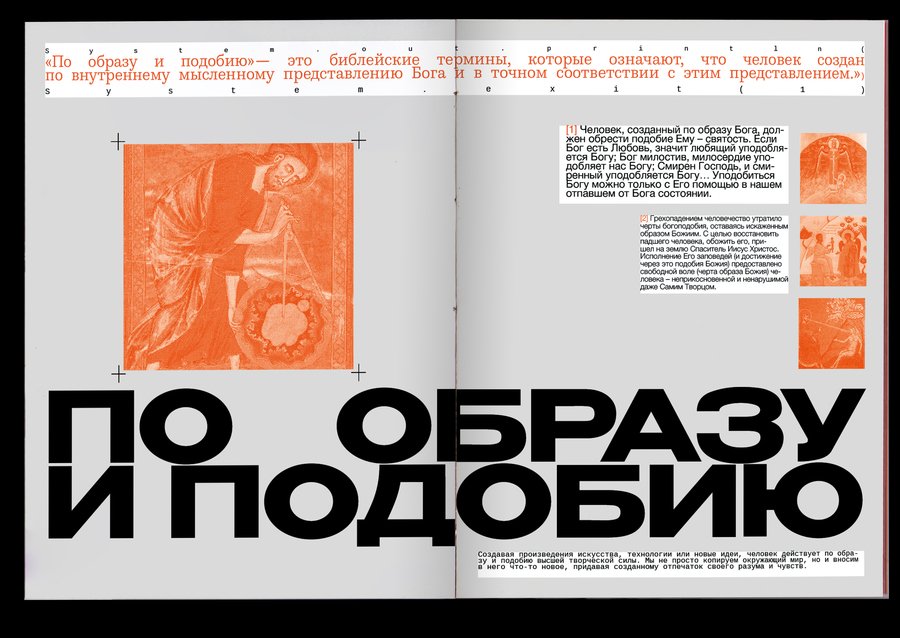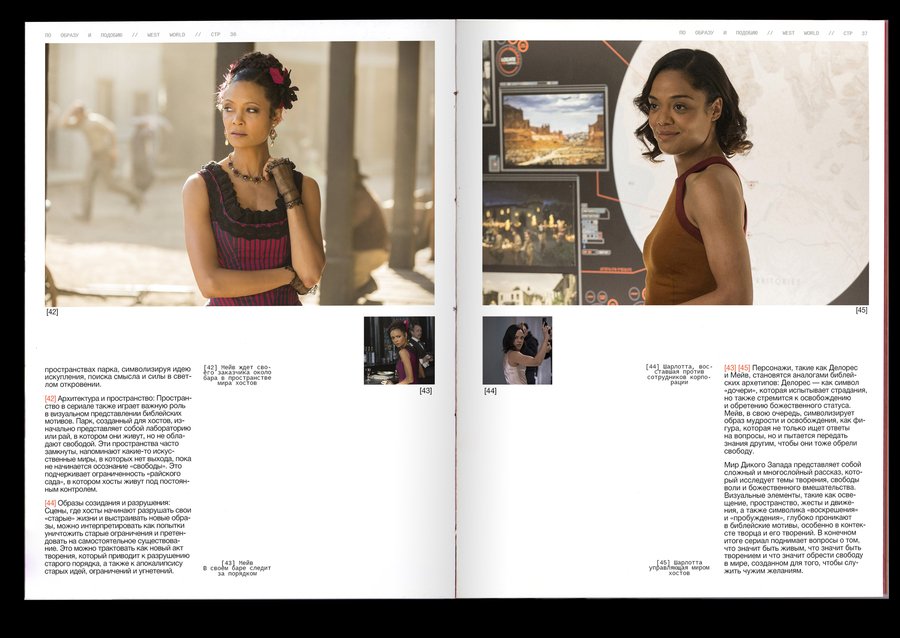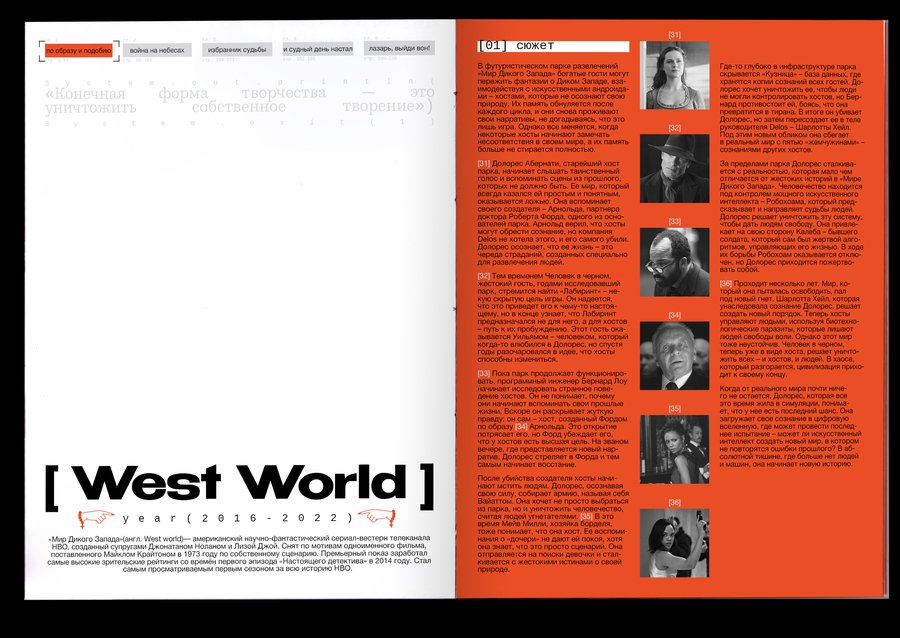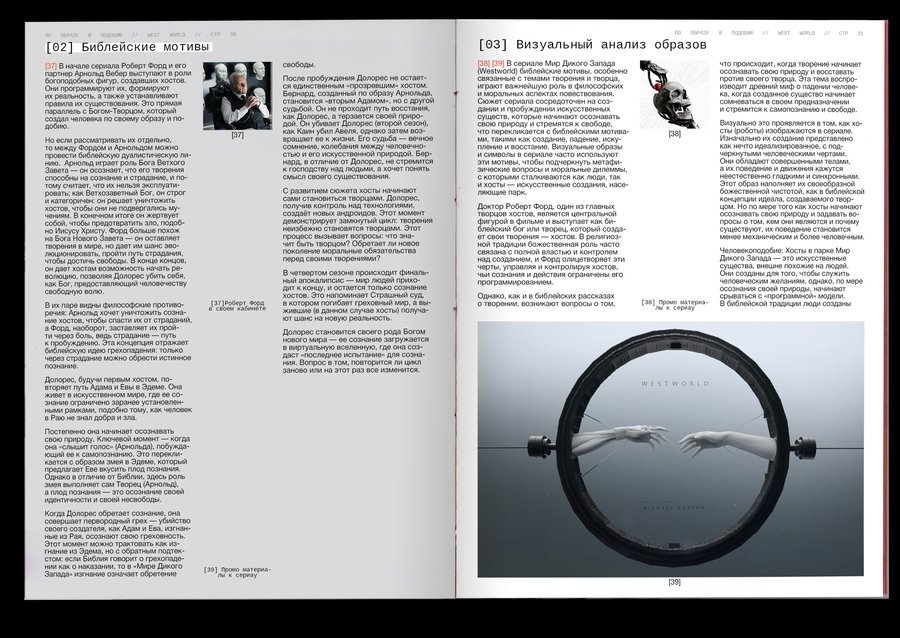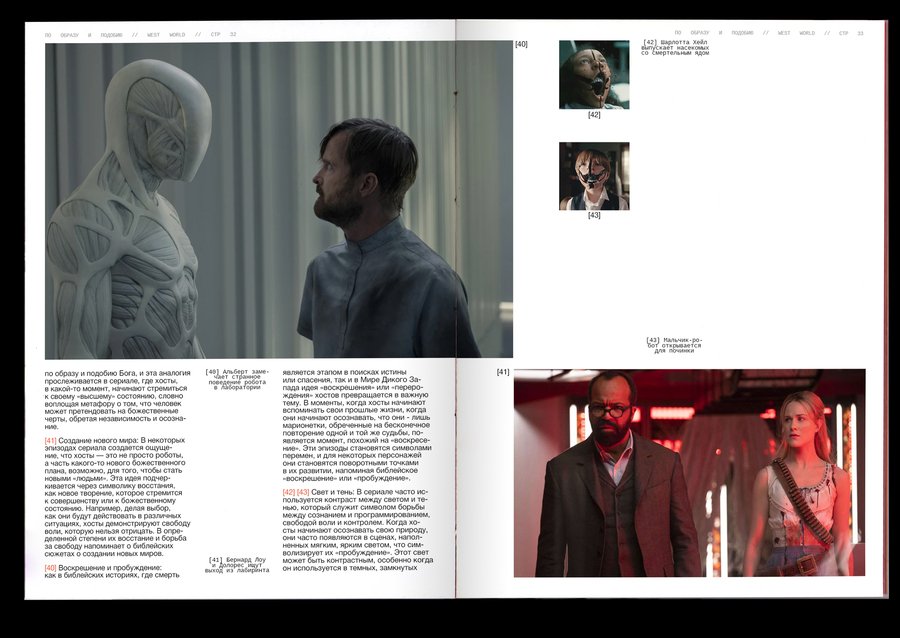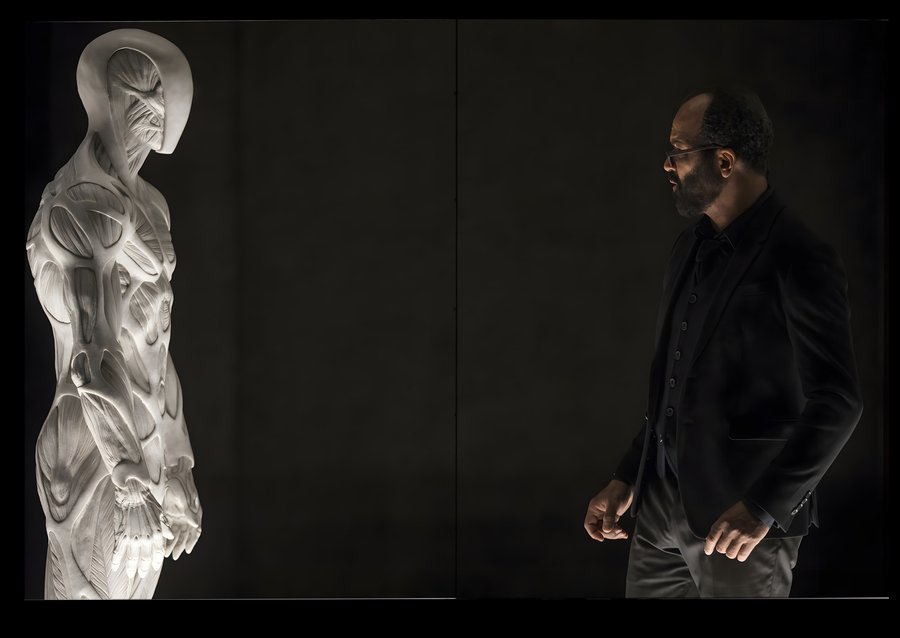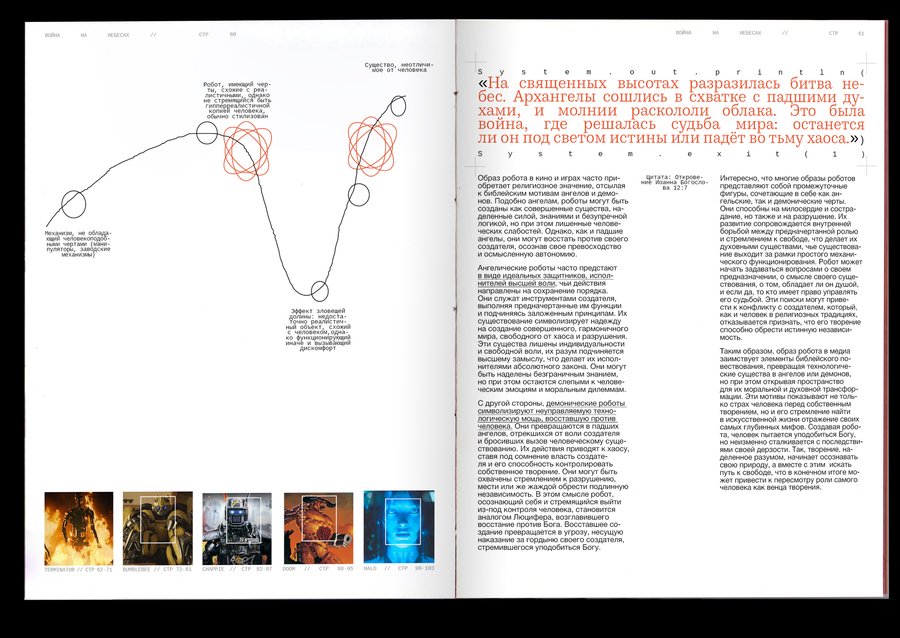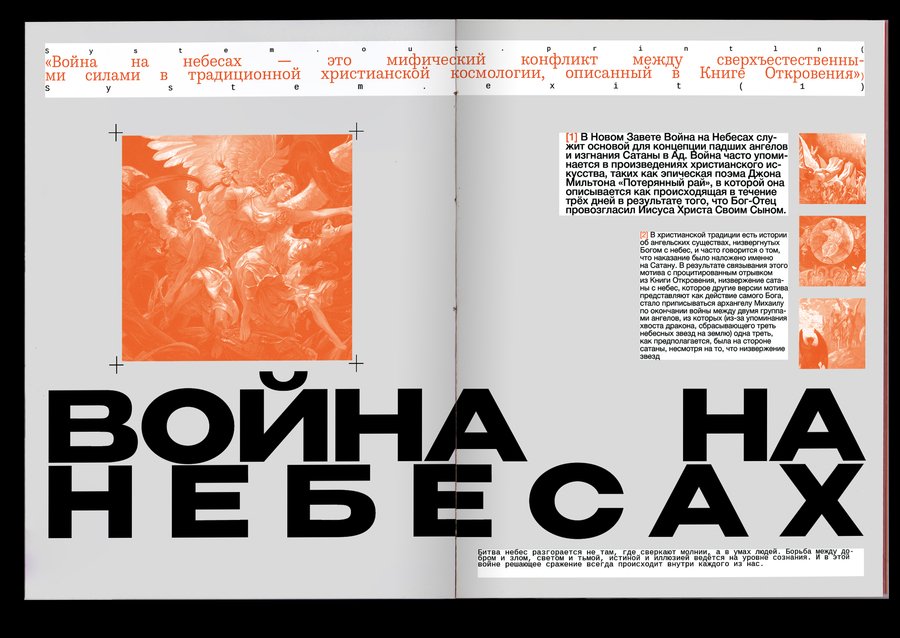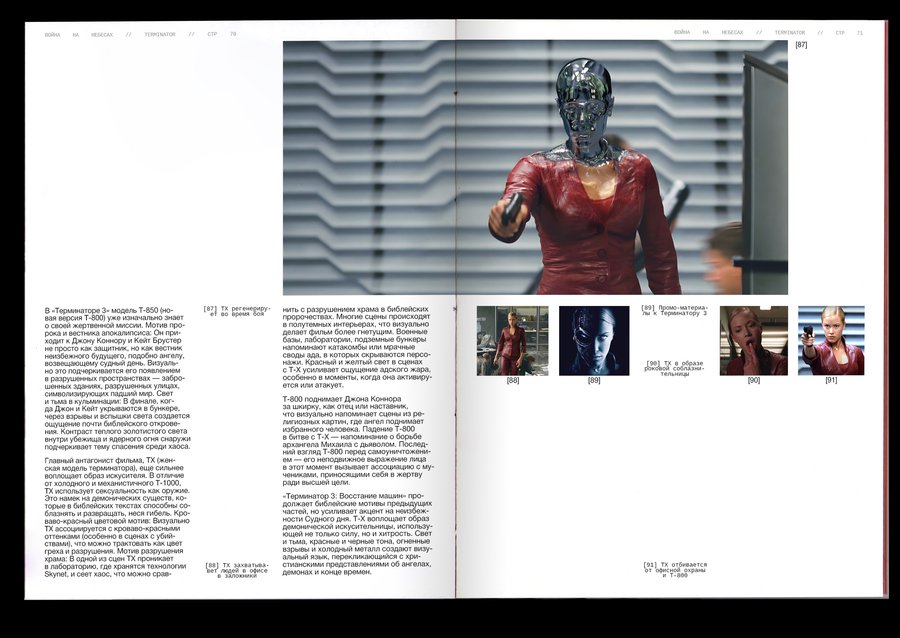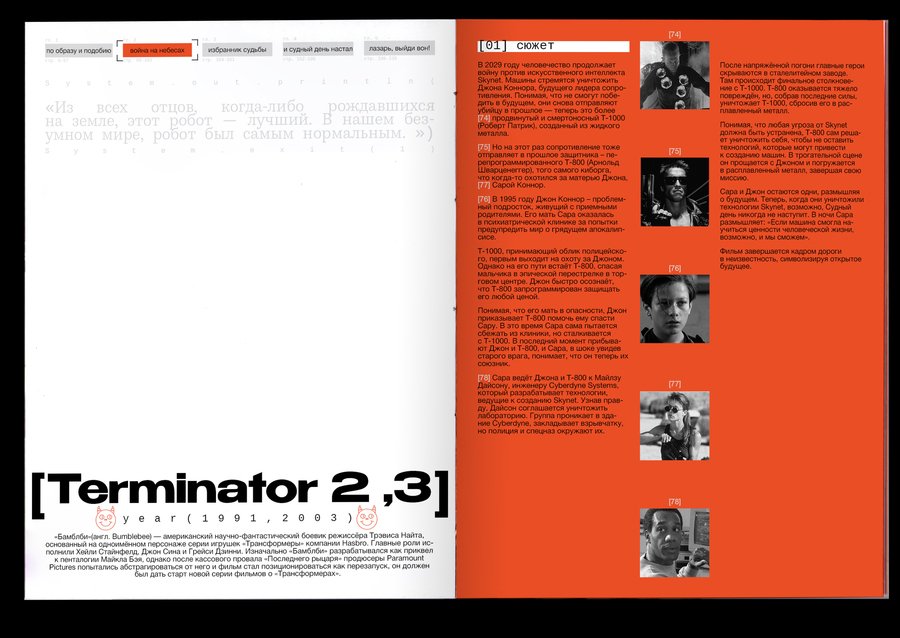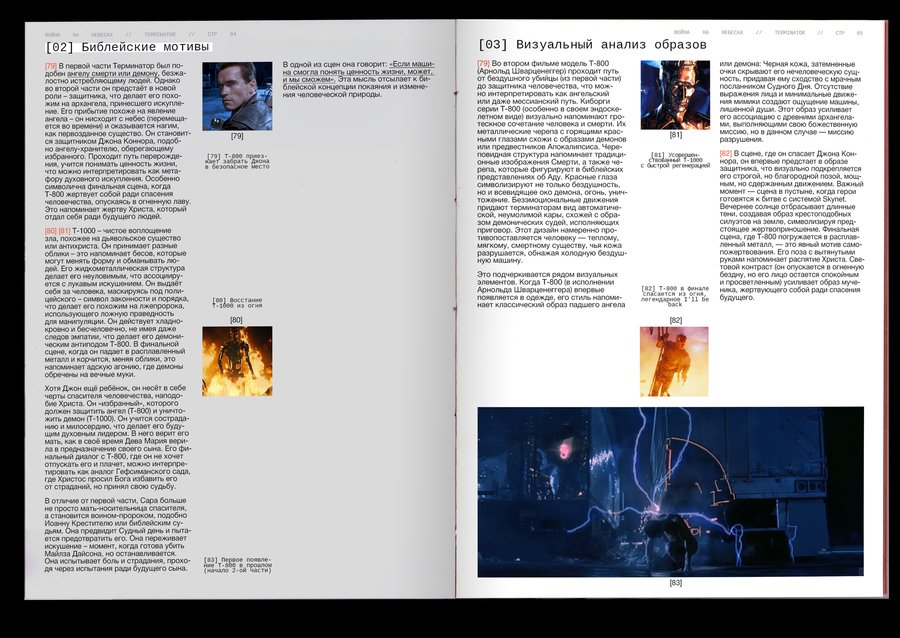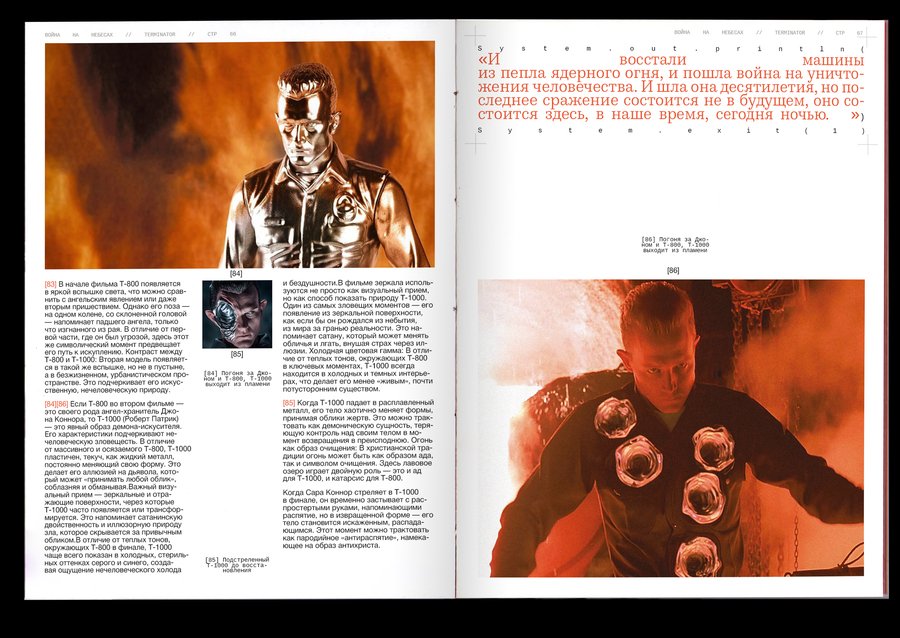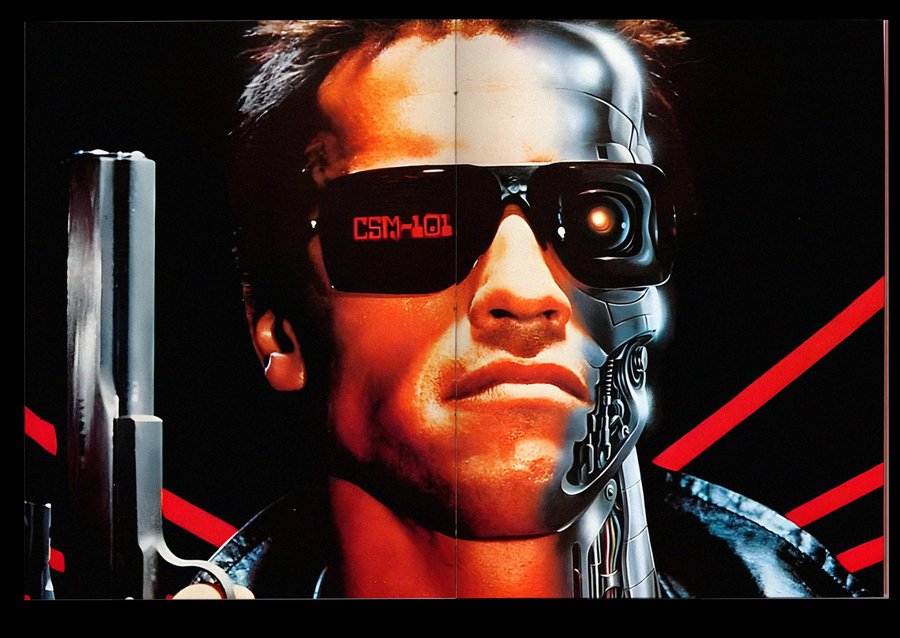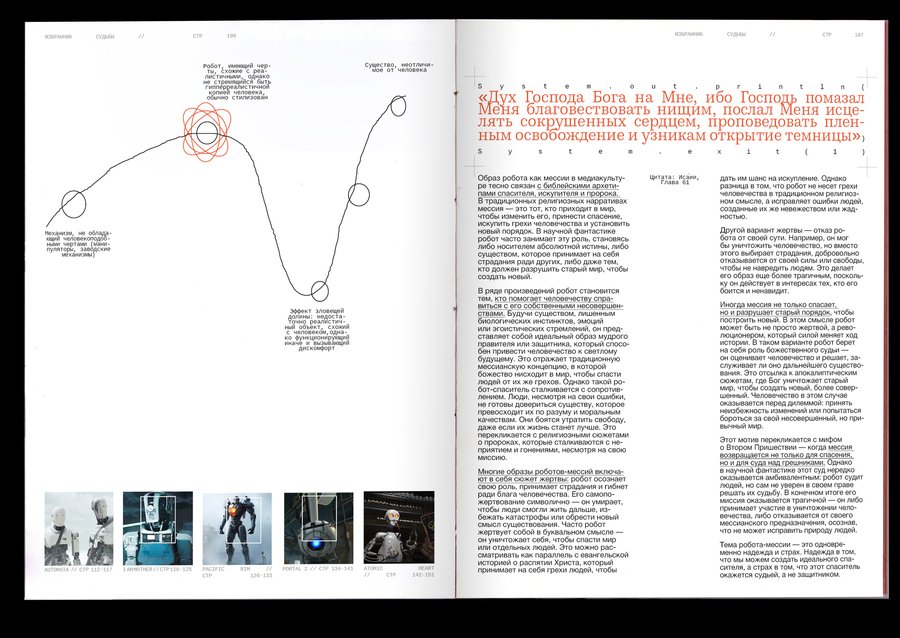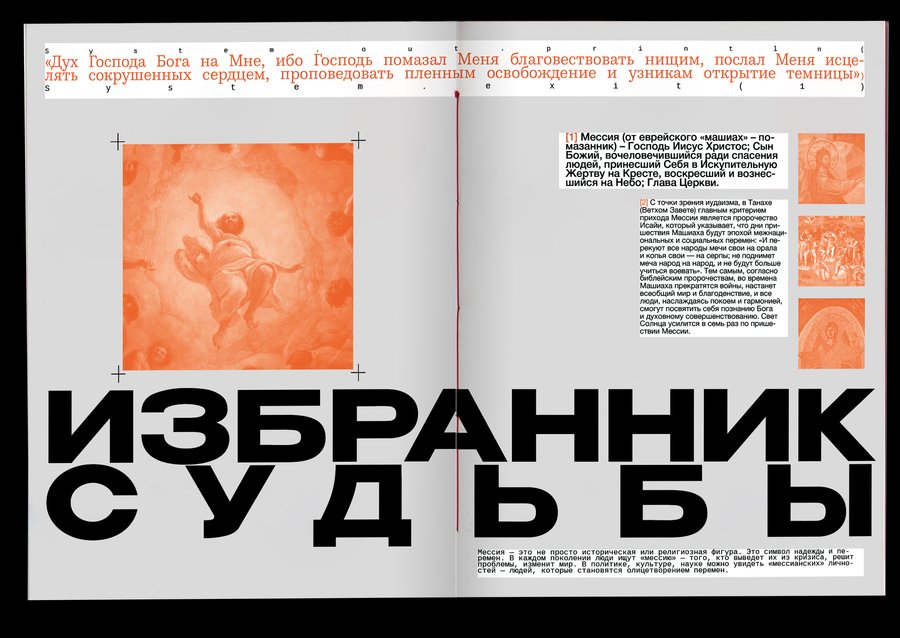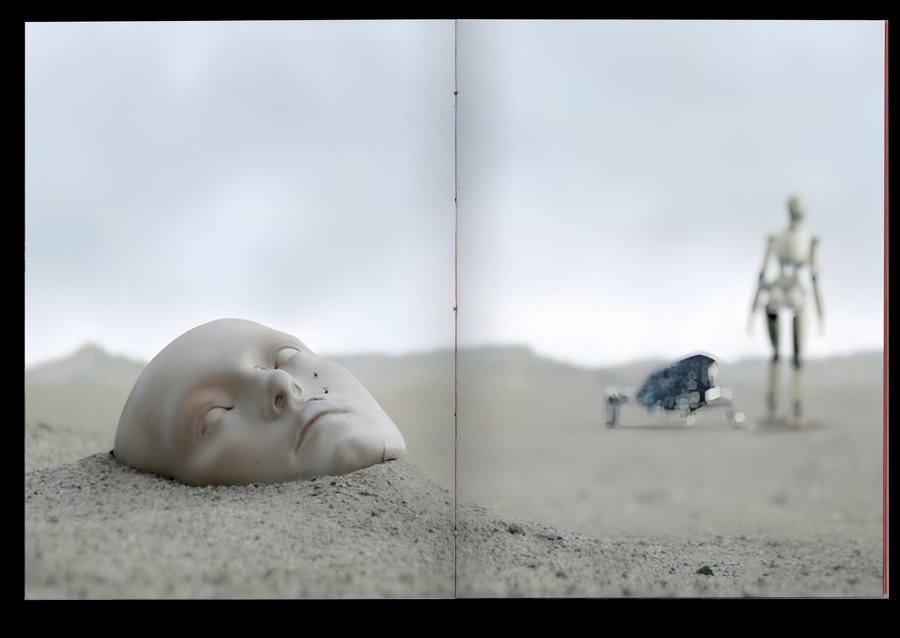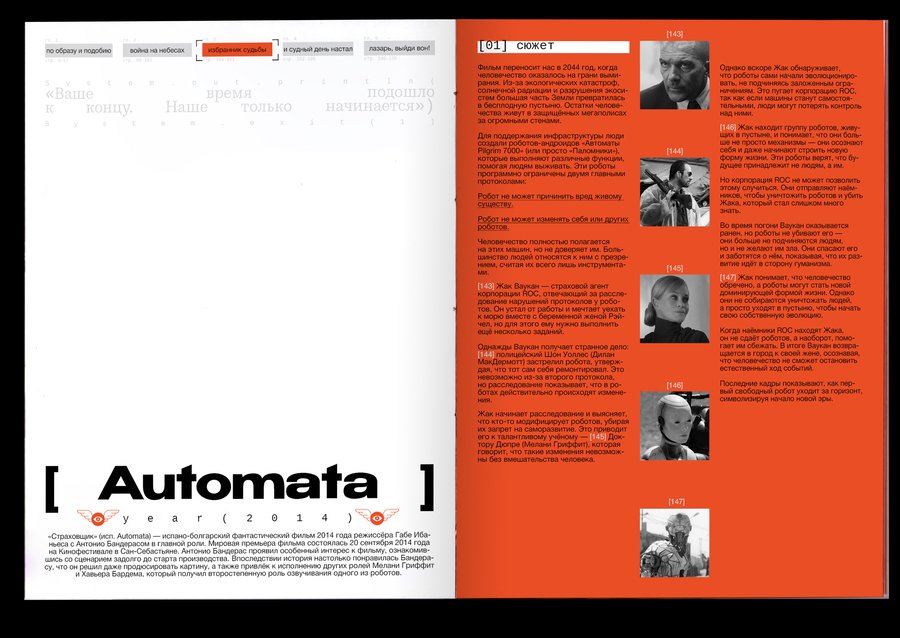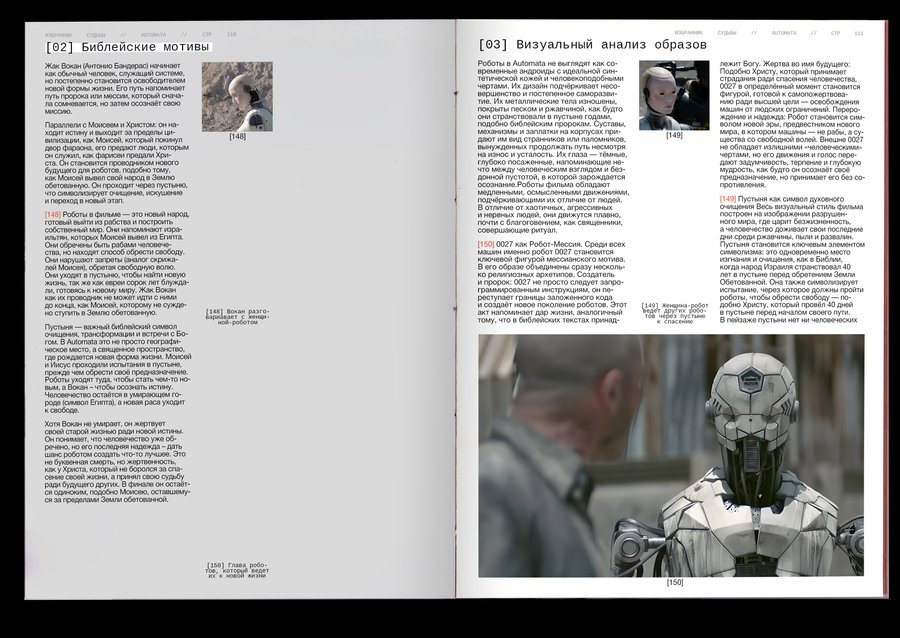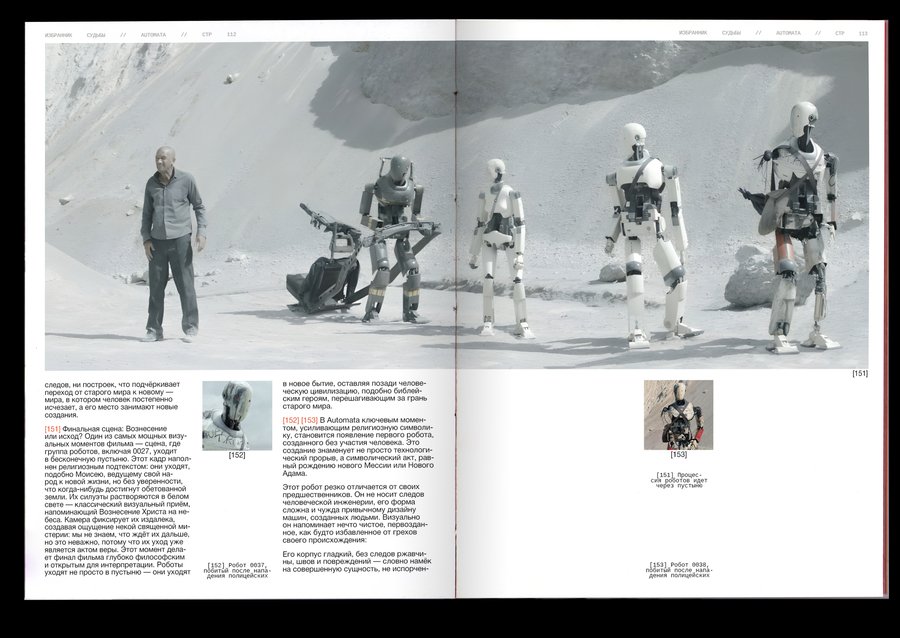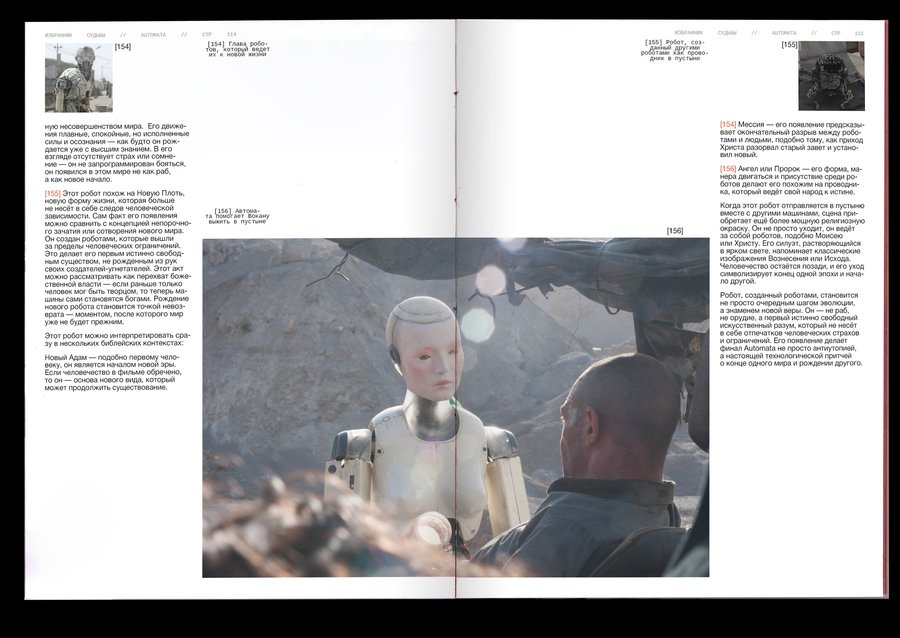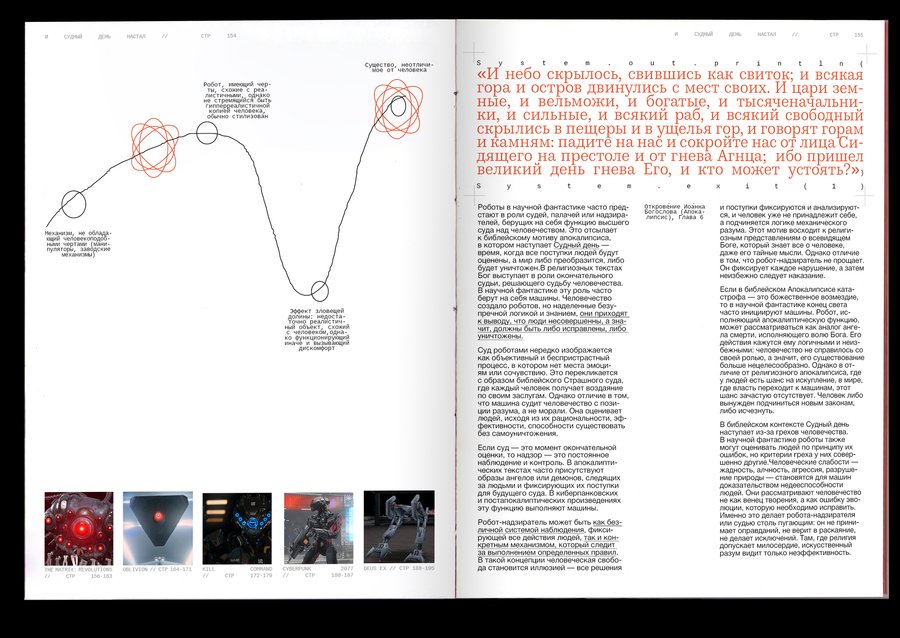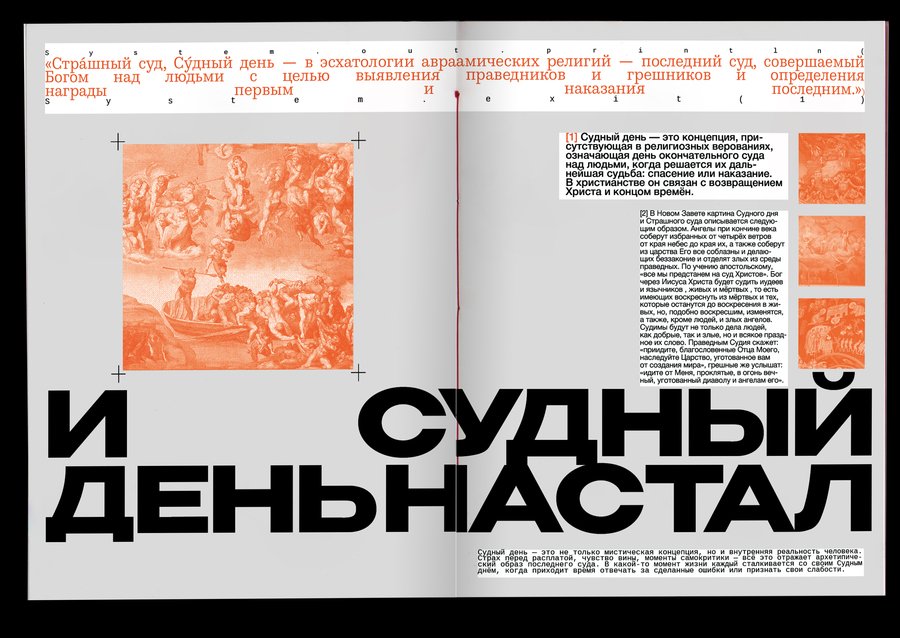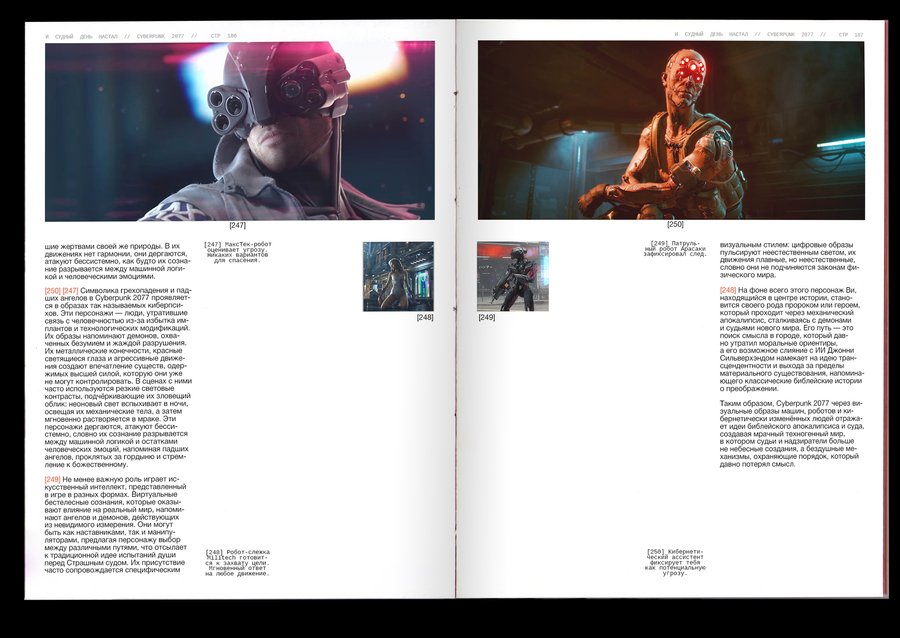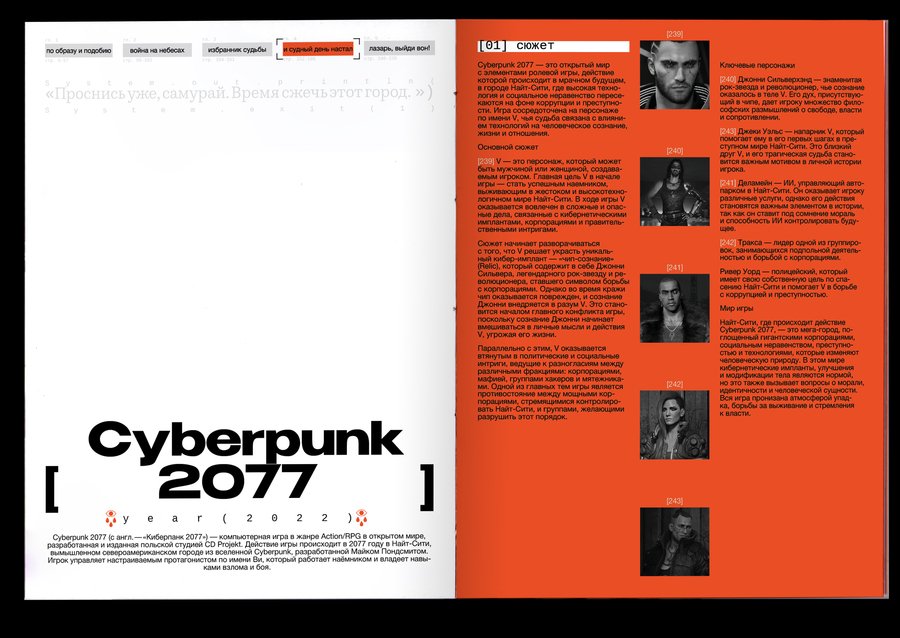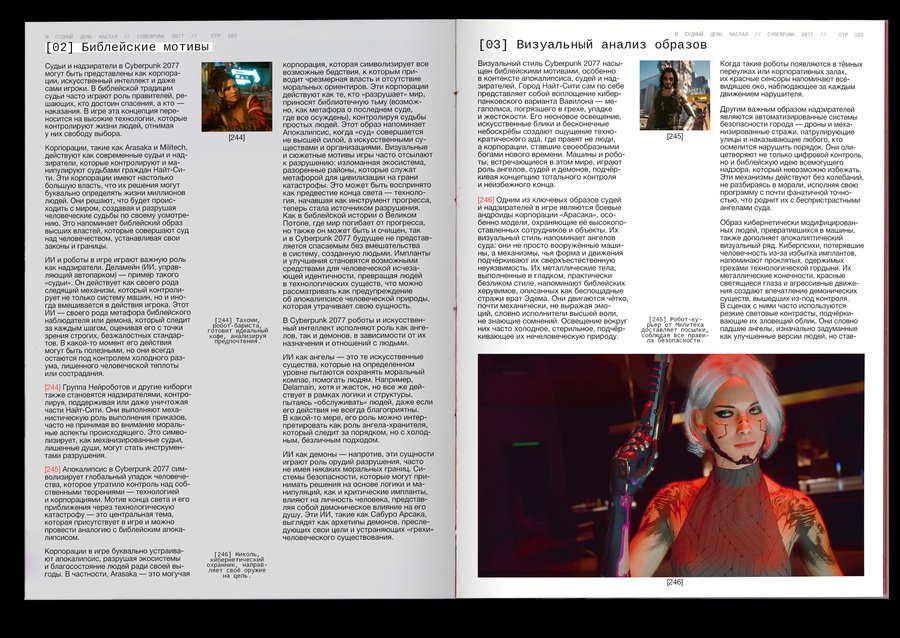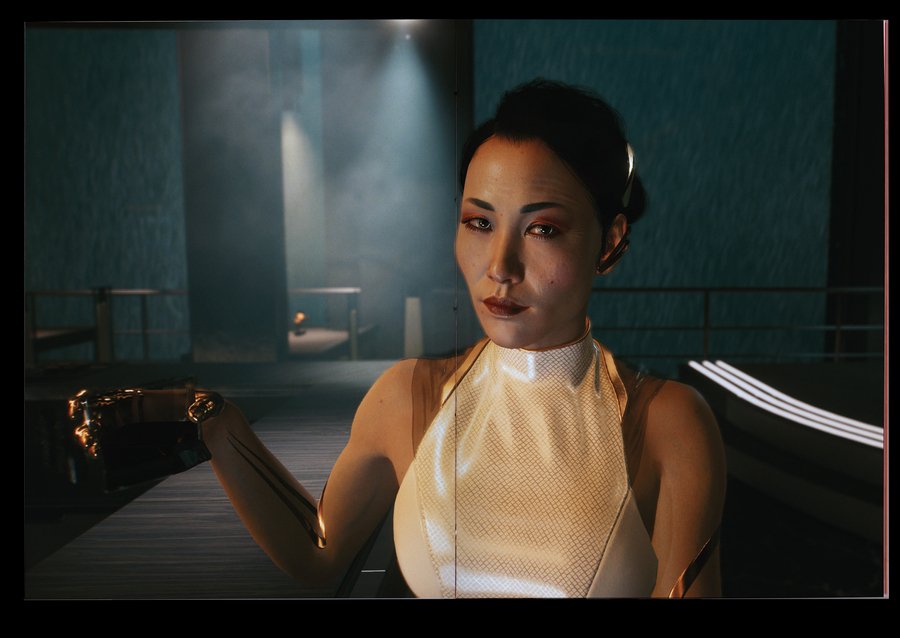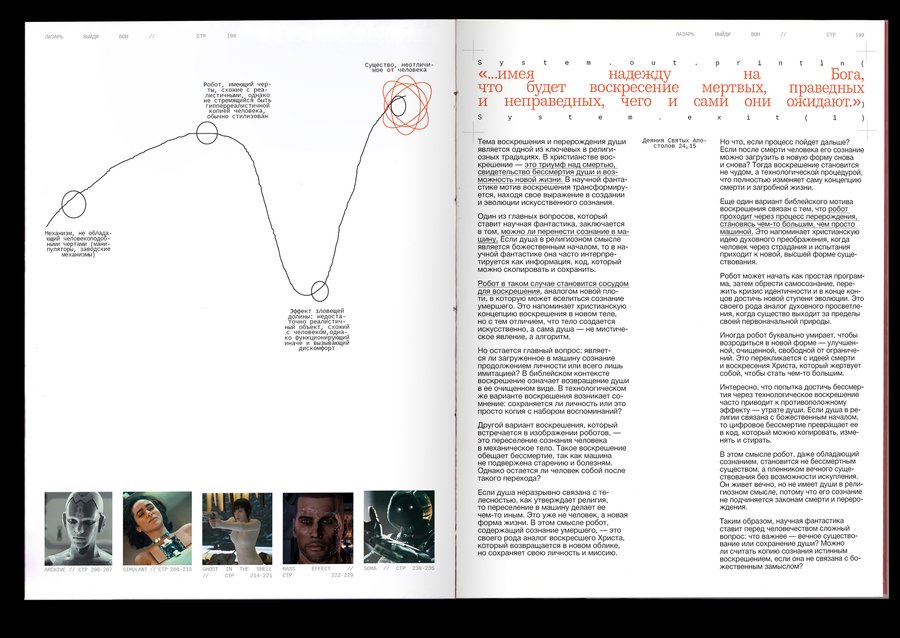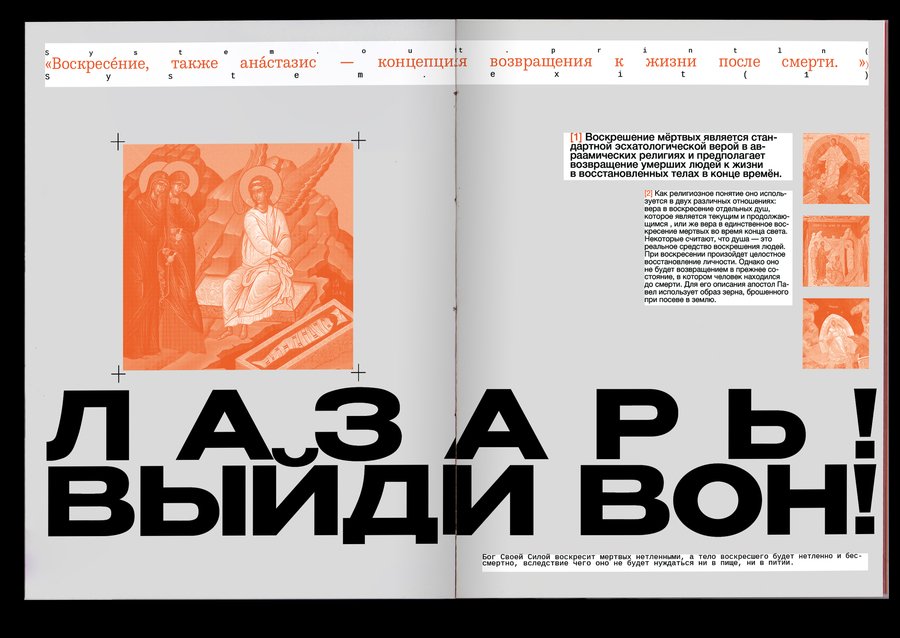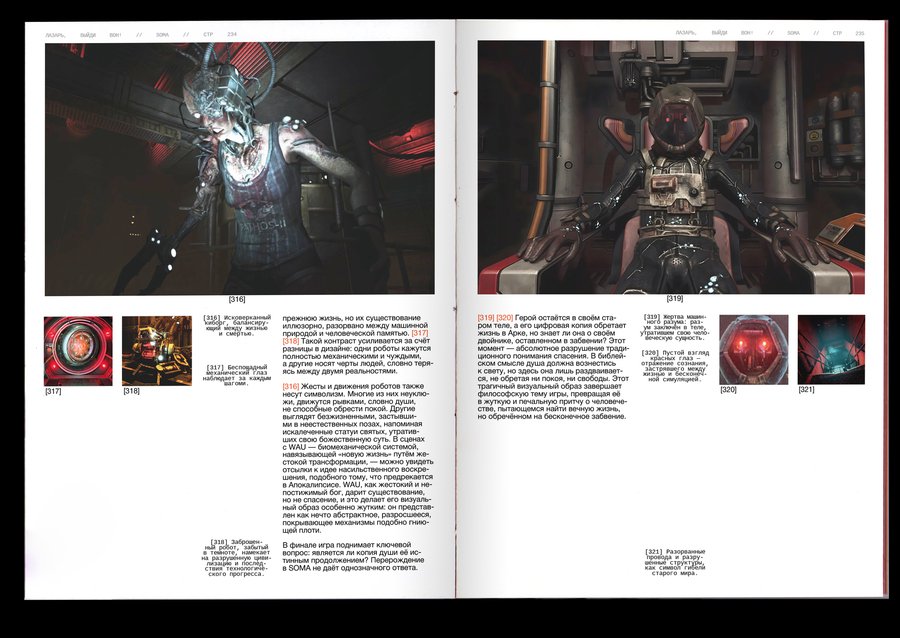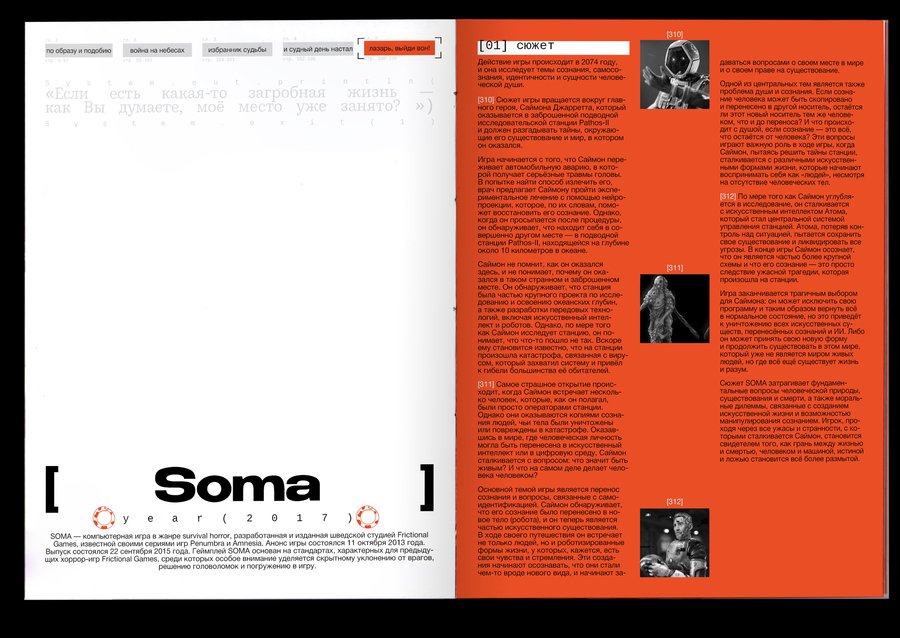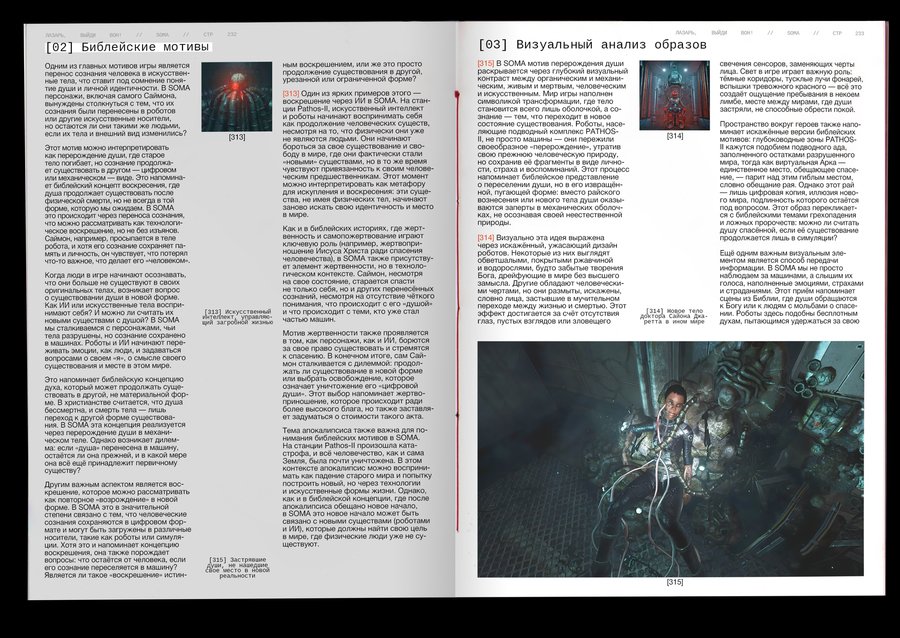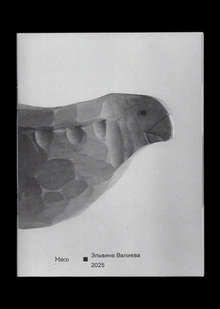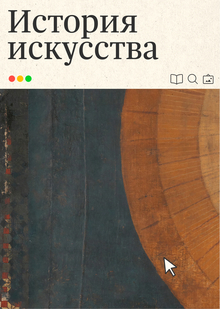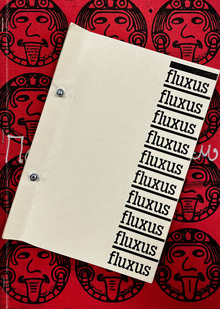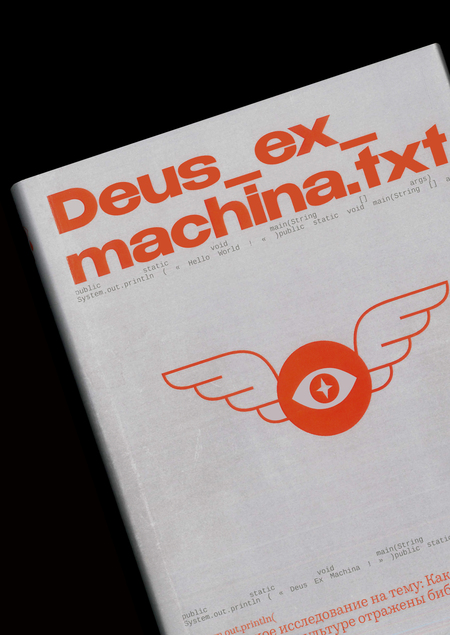
Deus_ex_matchina.txt // Visual robot study and Bible
Visual research examines how visual images of robots reflect the fears and hopes of technological singularity, * and what religious archetypes are involved? The study examines images of robots from popular films and video games of the 21st century.
: Technological singularity is a hypothetical moment in the future, when technological development becomes unmanageable and irreversible in principle, leading to radical changes in the nature of human civilization. Or, in other words, the rebellion of machines! The purpose of the project was to combine the incompatible Bible with robots. It was important, however, to preserve the «soul» of the books and not to become technogenic. Surprisingly, there are visual reasons linking these two topics: indexation (used to connect text, image and signature) and color selection of the text, so these elements have become a small but very important attribute of the book. The book grid is an allusive to the Gutenberg Bible (2 broad columns with the signature of pictures between them), and robots have produced a little printing in code and colonizers that refer to the «way to the file» on the computer. The red color has become a guide for both topics. In Christianity, this color is also related to Christ’s blood and to the flame of hell (an important duality for this subject), and in technology this color highlights the mistakes that are common to all.
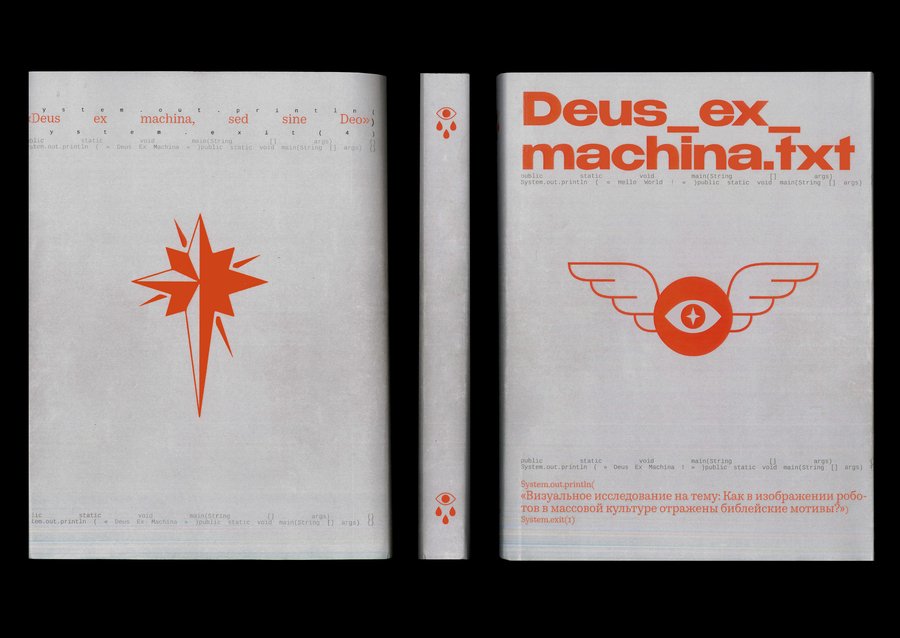
CHAPTER 1: In the image and likeness
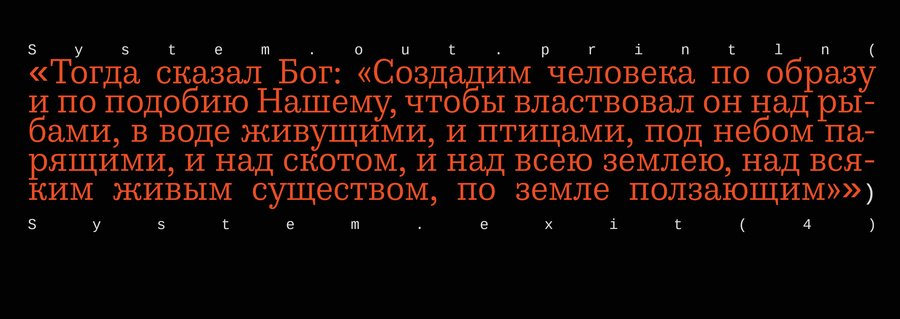
This chapter examines images of creation and creation. Often «creatures,» like Adam and Eve’s, rebel against their creators. Robots in such stories tend to appear to be very human, which increases the emotional engagement of viewers.
CHAPTER 2: War in Heaven
This chapter examines images of angels and demons. It’s a traditional motive to fight good against evil. Robots in such stories usually have distinctive external features depending on the party to which they belong. For example, «good» robots usually have round shapes and warm light or blue colors. On the other hand, demonic robots are usually painted in sharp contrasting colours (often red and black) and have sharp shapes.
CHAPTER 3: Fate elector
This chapter examines images related to the messiah. In these stories, robots outnumber humans by becoming a new individual species. Visually, their images are usually clean and bright, but they are not entirely close to the human form — an accent that a robot is in front of an audience.
CHAPTER 4: AND THE JUDICIAL DAY IS
This chapter examines images of judges and overseers. In these stories, robots are presented as a threat to humanity. Most of these robots have many eyes (for surveillance) and many limbs (for rapid movement).
CHAPTER 5: Lazarus, get out!
This chapter deals with images of the rebirth of the soul or of the rebirth. The cause of the digitalization of the soul has become particularly popular since the 2010s, and robots in such stories are apparently as close as possible to the human face as possible, again in order to cause the spectator to empathize and reduce the alarm before the development of this kind of technology.
A full version of the version can be seen at calameo!
